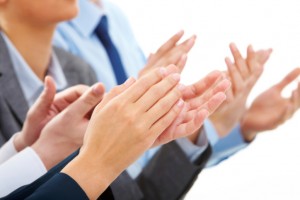 Accolades – below are news and notes from our alumni, faculty, staff, and students. We are proud of all the amazing accomplishments by our Neag family. If you have an accolade to share, we want to hear from you! Please send any news items (and story ideas) to shawn.kornegay@uconn.edu.
Accolades – below are news and notes from our alumni, faculty, staff, and students. We are proud of all the amazing accomplishments by our Neag family. If you have an accolade to share, we want to hear from you! Please send any news items (and story ideas) to shawn.kornegay@uconn.edu.
Students
Evan Johnson (current doctoral student in kinesiology) gave a presentation on “Effects of switching low and high drinkers on physiological markers in free-living conditions” at the Hydration 4 Health Annual Scientific Conference in Evian, France.
Leanne Masterjoseph (current doctoral student in educational leadership) will be the chief academic officer for Family Urban Schools of Excellence, a charter school management organization connected with Jumoke Academy Charter Schools in Hartford. Masterjoseph has been superintendent of Stonington Schools since January 2010, and was the assistant superintendent for two years before that. This year, she was named Southeastern Connecticut United Way’s “Volunteer of the Year.”
Colleen Muñoz (current doctoral student in kinesiology) attended the Hydration 4 Health Annual Scientific Conference in Evian, France. She was accepted to attend the conference through the “Young Investigator Award” based on her research on “evaluation of common tools for assessing hydration state and how these tools are influenced by different methods of achieving dehydration.”
Jeffrey Ventres is returning for his 5th season with the UConn Marching Band. Prior to becoming drum major, Jeff was a section leader of the trumpet section for the 2010 and 2011 seasons. He has had many opportunities with the marching band to perform in a variety of venues including the BCS Fiesta Bowl, the University of Michigan’s newly renovated stadium, and many others. He is a 5th year music education major and is actively teaching music around the state in K-12 schools while completing his degree. Ventres has been a member of the UConn Symphonic Band, Chamber Ensembles, and is currently a member of the Wind Ensemble, Symphony Orchestra and Pep Band.
Alumni
Laura Cretella (BS special education ’01, MA special education ’02) was named principal at Holland Hill Elementary School in Fairfield. Cretella, the new principal at Holland Hill School, is currently the instructional improvement teacher at McKinley School, a job that she has held since 2010. She previously taught second and fifth grades at Burr School as well as first grade in Darien.
Matthew Curtis (Sixth-Year Diploma educational administration ’05), a former Squadron Line principal and current assistant superintendent in Glastonbury, was unanimously chosen by the board of education to be the next superintendent of Simsbury Schools.
Lisa Cutting (Sixth-Year Diploma educational administration ‘00) has been appointed assistant superintendent for curriculum and instruction at Mohonasen Central School District. Most recently, she was the English language arts academic administrator. Cutting came into the district in 2002 as the Mohonasen High School principal.
Theodore A. Donahue (BA Spanish/economics ’88, UCAPP ’07), who currently serves as assistant principal at Irving A. Robbins Middle School, has been appointed principal at the school. Donahue, who has spent his entire teaching and administrative career in Farmington, was unanimously appointed by members of the school board after a national search. He’s been with the district for 12 years, first starting as a social studies teacher at Farmington High School. In 2006, he was appointed social studies department leader and in 2009, he was appointed dean of students at FHS. In 2011, he was selected as assistant principal at IAR.
Zato Kadambaya (MA mathematics education ’03) was one of nine people to receive an “Outstanding Alumni Educational Leadership Award” from CCSU. The nine honorees were asked to comment on the ongoing changes in education.
Kate Lund (BS English ’06, MA English education ’07, Sixth-year Diploma in educational administration ’12) was selected as the assistant principal at Smith Middle School in Glastonbury. Lund currently teaches English at Lyme-Old Lyme High School.
Elizabeth McGoey (Sixth-Year Diploma in educational administration ‘02) was named principal at Stratfield Elementary School in Fairfield. McGoey, is currently the principal at Nichols Elementary School in Stratford. Before she was named to that post in 2006, she was an assistant principal in Norwalk and Dayville.
Ebony Murphy-Root (BA English ’04, MA curriculum and instruction ’10) was selected as a 2012 participant for the Women’s Campaign School at Yale. The WCSY is a one-week, non-partisan, issue neutral leadership program whose mission is to increase the number and influence of women in elected and appointed office in the United States and around the globe. She currently teaches ninth grade English and composition at Capital Preparatory High School in Hartford. She plans to hone her skills in preparation for new opportunities within the areas of education, literacy, gender and politics and is hoping you will pass this on to the UConn and Neag community.
John Silva (BS elementary education ‘73, MA education ‘74) recently retired from the University of North Carolina – Chapel Hill (UNC- CH) after 31 years in higher education. Silva was a professor emeritus in sport psychology and certified consultant with the Association for Applied Sport Psychology. At UNC-CH, he developed the sport psychology graduate program and served as the director of the sport psychology program and the sport psychology laboratory. He has taught undergraduate and graduate courses in sport psychology and statistics and has consulted with UNC student athletes, professional athletes Olympic athletes, coaches and teams.
Cindy Van Fleet (BS home economics education ’79, MA education ’85) was named Meriden’s “Teacher of the Year.” A teacher at Platt High School, Van Fleet has been working at Platt for the past 33 years. She started working at the high school after graduating from the UConn at the age of 21, eventually taking on the role of home economics education teacher, which later became called family and consumer science. Van Fleet also teaches human development and family studies at UConn’s Waterbury campus during its fall, spring and summer sessions.
Tiffany Violette (BA journalism, sociology ’93, Sixth-Year Diploma in educational administration ’02) the South Windsor High School assistant principal who was honored as the state’s top assistant principal by the Connecticut Association of Schools this year, has been named the new head of Pleasant Valley Elementary School.
Faculty/Staff
Gifted and Talented — Exploring Shapes with Imi and Zani, first grade geometry from the department’s NSF grant was awarded the prestigious curriculum division award from the National Association for Gifted Children at their annual meeting in 2011. There have been several presentations at national conferences: NAGC, ASCD, AERA, NCSM, NCTM. These presentations involved the NSF grant-funded curriculum Project M2: Mentoring Mathematical Minds.
Debra Bubela was recently recertified as a board certified clinical specialist in pediatric physical therapy through the American Physical Therapy Association.
Jennifer Lease Butts, faculty member in the Higher Education and Student Affairs Program, has accepted the position of assistant vice provost and director of UConn’s Honors Program.
Doug Casa is being recognized by the National Strength and Conditioning Association with the President’s Award in July.
Sandra Chafouleas, professor in the School Psychology Program and a research scientist in the Center for Behavioral Education and Research, has been named associate dean of UConn’s Graduate School.
Sandy Chafouleas and Lisa Sanetti co-authored an article with several colleagues including a school psych doctoral student who lead the project, “Evaluating sensitivity to behavioral change across consultation cases using Direct Behavior Rating Single-Item Scales (DBR-SIS)” in Exceptional Children.
Craig Denegar has been named the editor-in-chief of the Journal of Athletic Training, a three-year appointment with one, three-year renewal.
Michael Faggella-Luby is being awarded the Michael Pressley award from Notre Dame to honor the impact of young scholars in education. The Michael Pressley Award for a Promising Scholar in the Education Field goes to an ACE formation program graduate whose work in academia echoes Dr. Michael Pressley’s commitment to strengthening education through research and scholarship. In addition, Fagella-Luby co-authored a publication with a doctoral student and other colleagues, “Building a house on sand: Why disciplinary specific strategies are not sufficient to replace general strategies for adolescent learners who struggle with reading and writing,” to appear in Topics in Language Disorders. He also co-presented “Teaching content to all: New ways of thinking about content, curriculum, and college teaching summer institute” at a weeklong professional development workshop for university faculty at the Center for Research on Learning, University of Kansas.
Wendy Glenn has several publications in press, “Omdefinerer en Norsk Norge: The influence of changing demographics on Norwegian schooling for social democracy” Equity and Excellence in Education Special Theme Issue, Global and Local Perspectives on Social Justice Pedagogy: History, Policy, and Praxis. She co-authored “Looking into and beyond time and place: The timeless potential of young adult literature” in The ALAN Review. The other article, “Developing understandings of race: Pre-service teachers’ counter-narrative (re)-constructions of people of color in young adult literature,” in English Education is due out in July.
Donald Leu co-authored the following publications:
- “New literacies in a Web 2.0, 3.0, 4.0, …∞ world” to appear in Research in the Schools
- “New literacies for new learners,” to appear in The Educational Forum
- “An online learning community as support for at-risk students’ literacy growth: Findings, implications, and challenges” to appear in Technology for literacy achievement in children at risk.
- “Working on understanding during collaborative online reading,” to appear in Journal of Literacy Research.
- “New literacies: A dual level theory of the changing nature of literacy, instruction, and assessment” to appear in Theoretical Models and Processes of Reading, Sixth Edition.
- “The new literacies of online reading comprehension,” to appear in The Encyclopedia of Applied Linguistics.
Leu also gave the keynote plenary address at the annual conference of the Australian Literacy Educators’ Association in Sydney, Australia. While there, he also delivered a lecture at Wollongong University and worked with their faculty on new literacies issues. In addition, he delivered, via video conference, the opening address to the New Literacies Teacher Leader Institute at North Carolina State University. This institute is sponsored by the NC State Department of Education. Finally, he is delivered the keynote at the third annual New Literacies Summer Institute of Massachusetts.
Betsy McCoach, organized and planned DATIC, five weeks of week-long summer data analysis training workshops. Over 100 faculty and researchers from all over the country and the world came to the workshops. She also oversaw, MMM, the 2nd annual Modern Modeling Methods conference, which had 125 people attend, again, from all over the world. McCoach is now the chair of the AERA Research on Giftedness, Creativity, and Talent Development SIG, along with being program chair of the Educational Statisticians SIG of AERA. She is the current chair of the Research and Evaluation Network of the National Association of Gifted Children, until September 1, 2012. McCoach presented a one-day workshop on HLM as a preconference at AERA 2012. She has also been invited to serve as a standing review panelist for the IES Reading, Writing, and Language Development Scientific Review Panel for a three-year term, beginning in fiscal-year 2013.
Betsy McCoach and Kathy Gavin co-authored a publication, with a former graduate student, “The effects of gifted programming on Mathematics and Reading Achievement” Gifted Child Quarterly. She also co-authored with former graduate student, “Teacher Attitudes toward Subject Specific Acceleration” in Journal for the Education of the Gifted. McCoach also co-authored two book chapters with Del Siegle: “Underachieving gifted students” in Fundamentals of gifted education and “Underachievers” in The Encyclopedia of Adolescence. Finally, she co-authored another chapter “Issues in the analysis of change” in the Handbook of measurement, assessment, and evaluation in higher education.
Natalie Olinghouse co-authored a new practice guide “Teaching Elementary School Students to be Effective Writers” for the What Works Clearinghouse, funded by the Institute of Education Sciences. She was one of seven panel members on this guide and spent the past three years working on it.
Linda Pescatello, was a participant with ACSM’s Distinguished Leaders in Sports Medicine and Exercise Science video series produced and distributed by Healthy Learning.
Lisa Sanetti co-authored an article with a school psychology doctoral student, “The link between obesity and academics: School psychologist’s role in collaborative prevention” for School Psychology Forum. In addition, she has been awarded the Lightner Witmer Award from Division 16 of the APA. This award is provided to academic school psychologists within the first seven years of receiving their PhD who “have demonstrated remarkable scholarship.”
Del Siegle has a new book coming out “The Underachieving Gifted Child: Recognizing, Understanding, and Reversing Underachievement” from Prufrock Press. He is chair elect of the AERA Research on Giftedness, Creativity, and Talent SIG and he spent a week in March consulting with the Hong Kong Academy for Gifted Education on issues of underachievement and creativity.
Kimberly Silverman, a physical therapist and clinical faculty at UConn Health Center who takes DPT students on a regular basis, was recognized with the “Clinical Educator of the Year” by the New England Consortium of Academic Coordinators of Clinical Education. She was nominated by a DPT student.
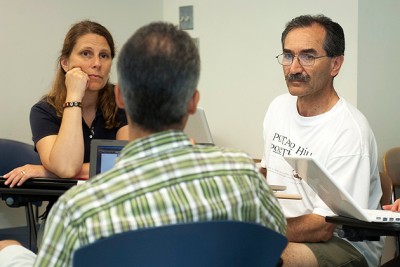
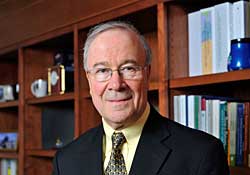 As announced in a previous
As announced in a previous 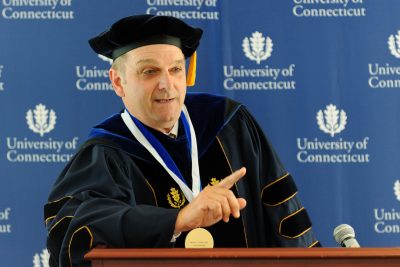
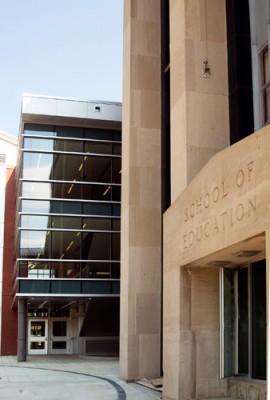
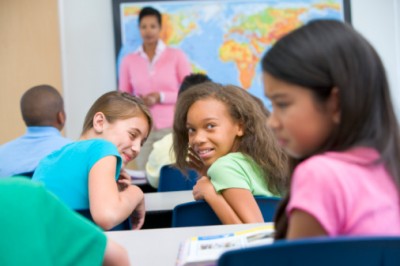 Helping teachers successfully implement and sustain interventions needed to stop bullying, best implement a new curriculum, improve hand raising or address countless other behavioral and educational issues is the focus of the
Helping teachers successfully implement and sustain interventions needed to stop bullying, best implement a new curriculum, improve hand raising or address countless other behavioral and educational issues is the focus of the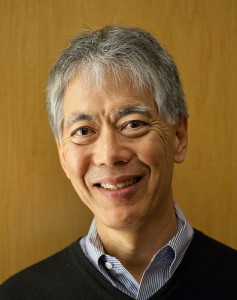
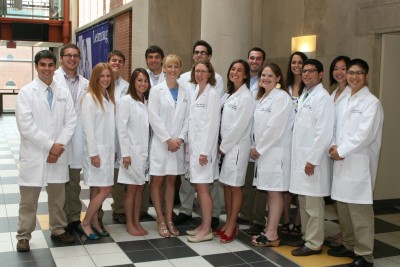
 This summer is filled with excitement with all of the happenings under the umbrella of “assessment” at the Neag School of Education. This includes:
This summer is filled with excitement with all of the happenings under the umbrella of “assessment” at the Neag School of Education. This includes: Accolades – below are news and notes from our alumni, faculty, staff, and students. We are proud of all the amazing accomplishments by our Neag family. If you have an accolade to share, we want to hear from you! Please send any news items (and story ideas) to
Accolades – below are news and notes from our alumni, faculty, staff, and students. We are proud of all the amazing accomplishments by our Neag family. If you have an accolade to share, we want to hear from you! Please send any news items (and story ideas) to 